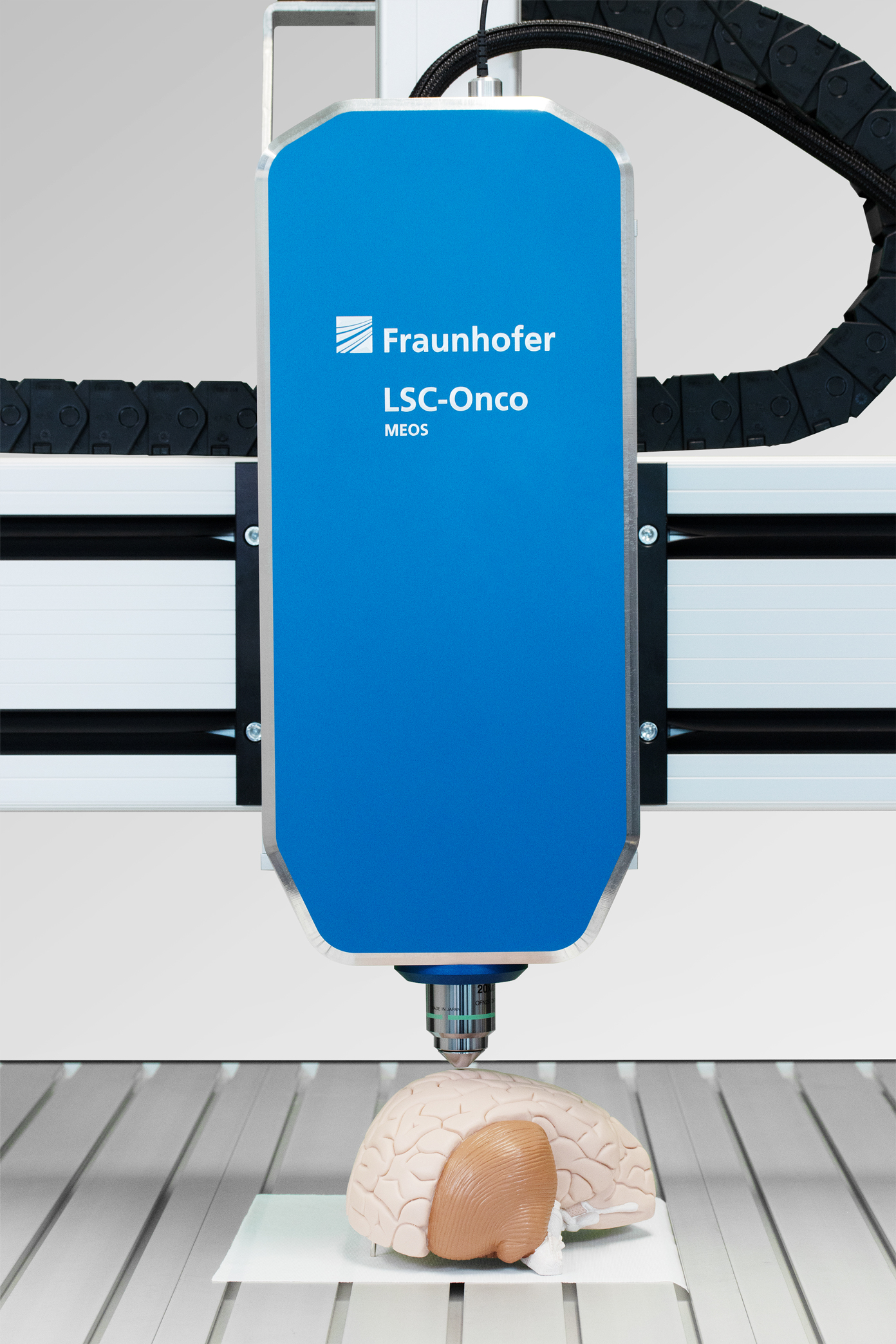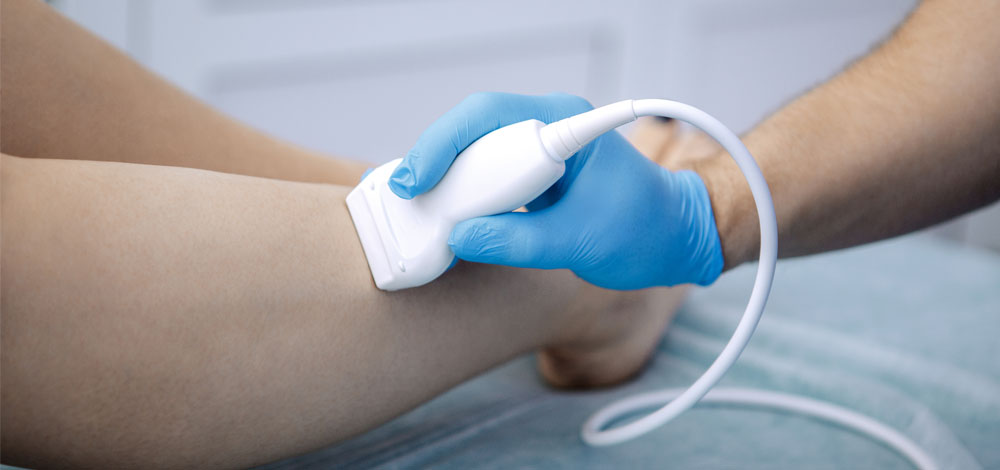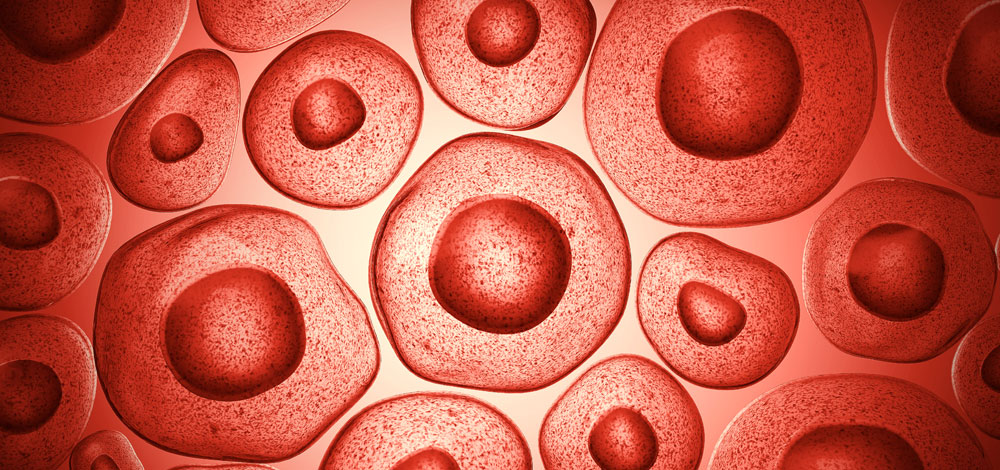Confocal microscope for rapid detection of tumor boundaries during surgery
Project period: 04/2018-12/2022

Every year, approximately 500,000 people in Germany are diagnosed with cancer. Diagnostics and treatment are developing steadily, but today it is still virtually impossible for doctors to determine the success of a tumor resection in a very short time during surgery. Thus, after surgical removal of a tumor, it is common practice to take a tissue sample from the wound margin and have it pathologically examined in the laboratory to ensure that all tumor cells have been removed. This procedure takes up to 20 minutes. What would be desirable is a method that can be used quickly, reliably and directly on site in the operating room. Therefore, employees of Fraunhofer IPMS and Fraunhofer IZI have jointly developed a new confocal microscope for intraoperative tumor diagnostics at the Fraunhofer Center MEOS.
The distinction between healthy tissue and tumor tissue is often not easy to make. The goal of tumor surgery is to create tumor-free resection margins while increasing the preservation of surrounding healthy tissue. This is currently complicated by the fact that current technical solutions do not allow three-dimensional imaging of the tumor margin. Histological analysis during surgery is feasible, but it is time-consuming and not feasible for all tissue types (e.g., bone). Therefore, there is a great need for an easily applicable, optical method that differentiates healthy tissue structures from tumor tissue intraoperatively and within a fast time frame.
In the Fraunhofer Center MEOS, employees of Fraunhofer IPMS and Fraunhofer IZI have jointly developed a MEMS-based laser scanning microscope and a fluorescence marker method of tumor cells. The aim is to localize tumor boundaries in the best possible way to ensure the complete preservation of e.g. brain cells and arteries during neurosurgical interventions. In the first step, the tumor margin must be stained for this purpose. Here, a special method for the specific staining of tumor cells using fluorescence-labeled antibodies at the cell culture level is used, which was developed by Fraunhofer IZI staff. An image of the cut surface is then taken through the confocal microscope. The core of the microscope is a scanning mirror developed at Fraunhofer IPMS, which allows the light to be deflected in the x- and y-directions, thus generating an image practically in real time. This allows a lateral resolution < 1.0 μm to be achieved in the fluorescence image with a field size of 200 x 200 μm² (960 x 960 pixels). For sectional images, the system is equipped with a z-shifter with a max path length of 2000 μm and 5 nm min step size.
In 2021, a demonstrator of the microscope was set up and successfully tested at the Fraunhofer Center MEOS in Erfurt. For this purpose, tissue samples were provided by the application partner, Helios-Klinikum in Erfurt. Future work will focus on the use of artificial intelligence (AI) for automated detection of tumor resection margins, robotics to create an assistance system for surgical staff, and system adaptations for transfer to a clinical environment.
 Fraunhofer Institute for Photonic Microsystems
Fraunhofer Institute for Photonic Microsystems


